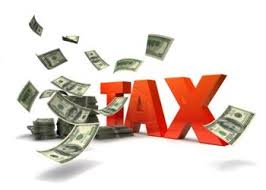The Internal Revenue Service on April 2, 2019 urged taxpayers to file an accurate tax return on time, even if they owe but can’t pay in full.
Most taxpayers are being affected by major tax law changes. While most will get a tax refund, others may find that they owe taxes. Those who owe may qualify for a waiver of the estimated tax penalty that normally applies. See Form 2210, Underpayment of Estimated Tax by Individuals, Estates and Trusts, and its instructions for details.
The filing deadline to submit 2018 tax returns is Monday, April 15, 2019, for most taxpayers. Because of the Patriots’ Day holiday on April 15 in Maine and Massachusetts and the Emancipation Day holiday on April 16 in the District of Columbia, taxpayers who live in Maine or Massachusetts have until April 17 to file their returns.
Checking on refunds
The IRS issues nine out of 10 refunds in less than 21 days. Using the “Where’s My Refund?” online tool, taxpayers can start checking on the status of their return within 24 hours after the IRS receives an e-filed return or four weeks after the taxpayer mailed a paper return. The tool has a tracker that displays progress through three phases: (1) Return Received; (2) Refund Approved; and (3) Refund Sent.
All that is needed to use “Where’s My Refund?” is the taxpayer’s Social Security number, tax filing status (such as single, married, head of household) and exact amount of the tax refund claimed on the return.
“Where’s My Refund?” is updated no more than once every 24 hours, usually overnight, so there’s no need to check the status more often.
How to make a tax payment
Taxpayers should visit the “Pay” tab on IRS.gov to see their payment options. Most tax software products give taxpayers various payment options, including the option to withdraw the funds from a bank account. These include:
- IRS Direct Pay offers taxpayers a free, fast, secure and easy way to make an electronic payment from their bank account to the U.S. Treasury.
- Use an approved payment processor to pay by credit or debit card for a fee.
- Mail checks or money orders made out to the U.S. Treasury.
- Make monthly or quarterly tax payments using IRS Direct Pay or through the Electronic Federal Tax Payment System.
Can’t pay a tax bill?
Everyone should file their 2018 tax return by the tax filing deadline regardless of whether they can pay in full. Taxpayers who can’t pay all their taxes have options including:
- Online Payment Agreement — Individuals who owe $50,000 or less in combined income tax, penalties and interest and businesses that owe $25,000 or less in payroll tax and have filed all tax returns may qualify for an Online Payment Agreement. Most taxpayers qualify for this option and an agreement can usually be set up on IRS.gov in a matter of minutes.
- Installment Agreement — Installment agreements are paid by direct deposit from a bank account or a payroll deduction.
- Delaying Collection — If the IRS determines a taxpayer is unable to pay, it may delay collection until the taxpayer's financial condition improves.
- Offer in Compromise (OIC) — Taxpayers who qualify enter into an agreement with the IRS that settles their tax liability for less than the full amount owed.

Marini & Associates, P.A.
Read more at: Tax Times blog







